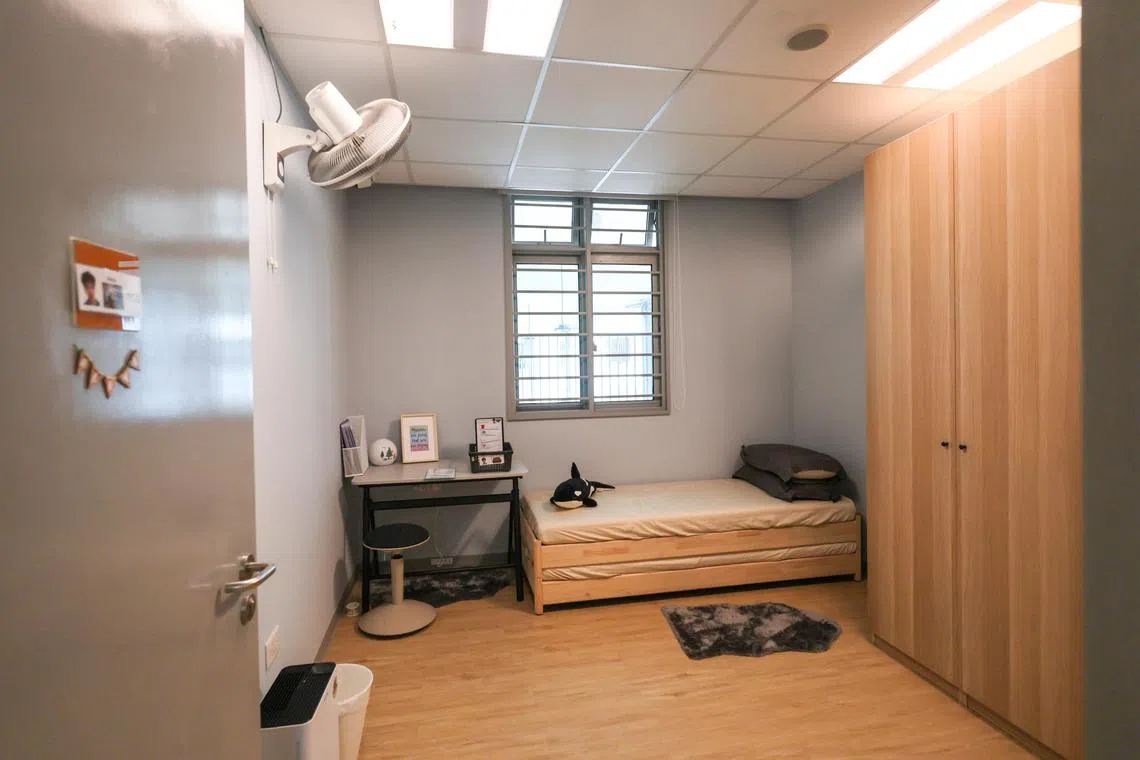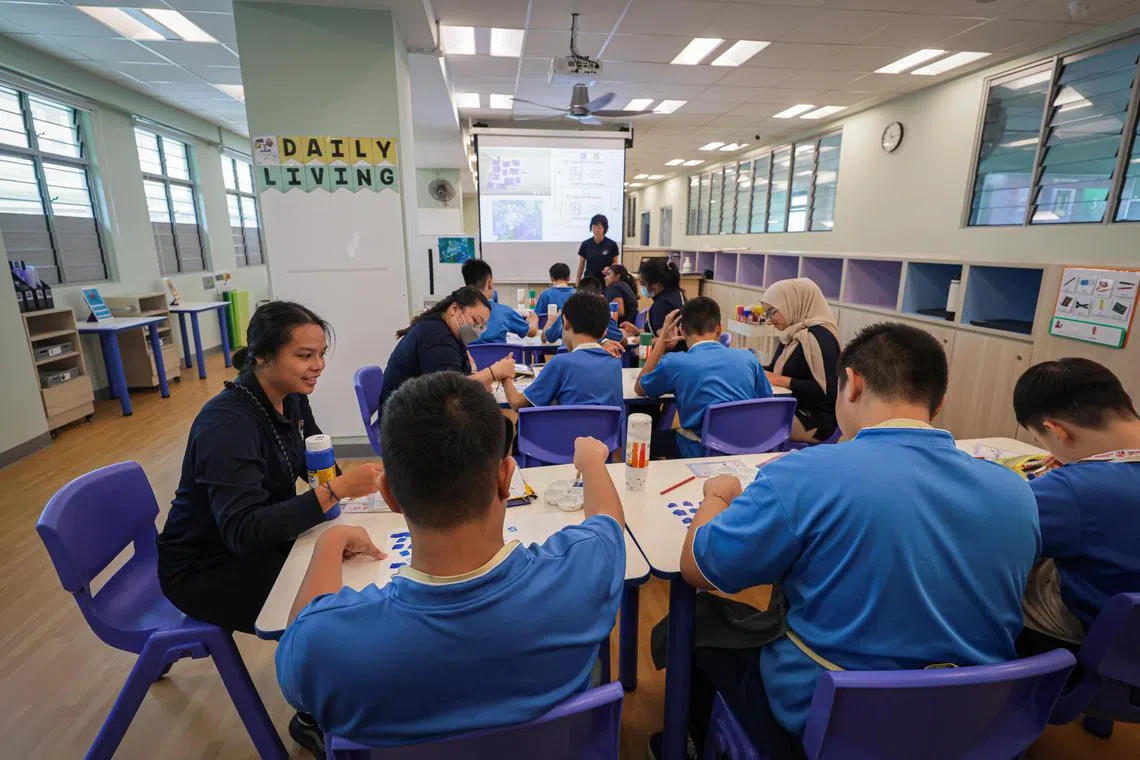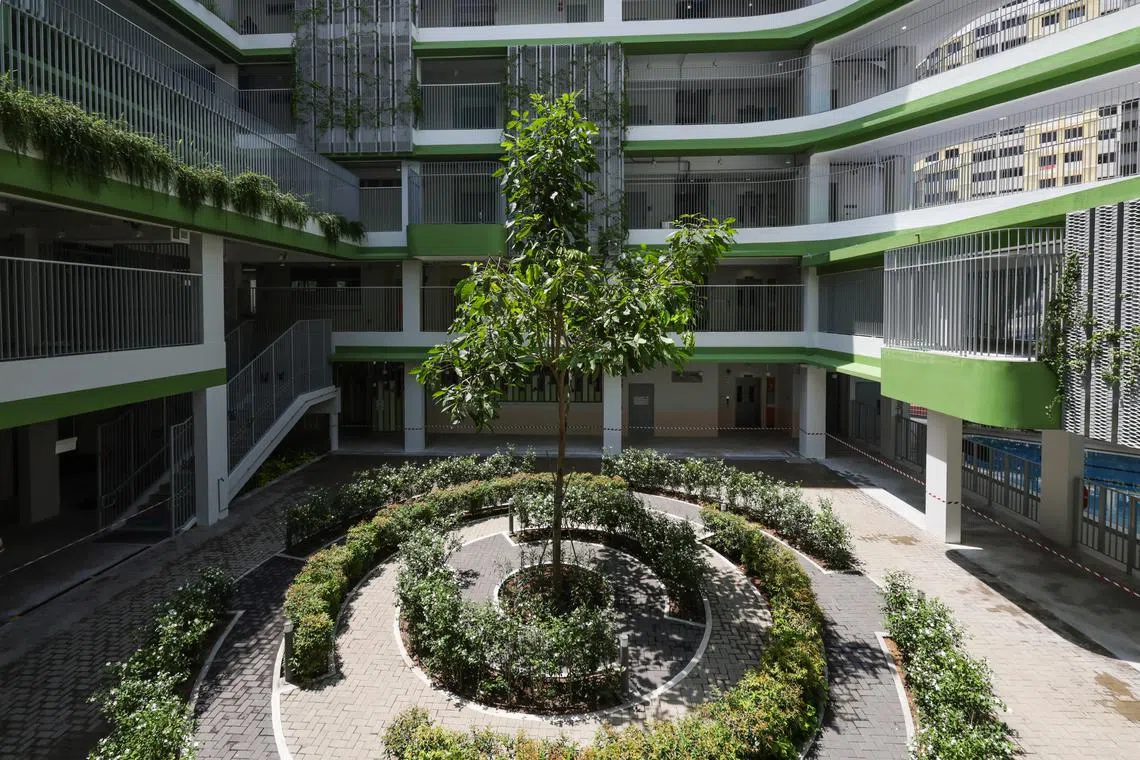New Rainbow Centre school features first-of-its-kind boarding facility for students with autism
Sign up now: Get ST's newsletters delivered to your inbox
Follow topic:
SINGAPORE – In the past, Gan Siang Teng’s domestic helper used to prepare her meals and help her with chores like folding her clothes.
But after attending a new boarding programme – the first of its kind offered by a special education (Sped) school here – in March, the 16-year-old, who has moderate autism, has learnt to do such tasks on her own.
The 10-week Good Life Boarding programme, run by social service agency Rainbow Centre, includes after-school training on daily living skills and short stays for students with help from a life coach.
“After the programme, Siang Teng has been able to do daily tasks such as washing her own plate after dinner without any prompting by us,” said her mother Chua Lay Hong. “Her increased independence is promising for us, and it is amazing to see her take care of herself and be more confident in managing everyday routines,” the 49-year-old, who works in sales support, added.
Siang Teng is one of 215 students with autism enrolled in Rainbow Centre Admiral Hill School, which is officially opening on Oct 3. The purpose-built campus at 21 Admiralty Lane can take in 300 students with autism aged seven to 18.
The new campus serves students with moderate to high support needs, nearly half of whom are non-verbal, said its principal Jessica Wee. There is one teacher to support every three or four students.
Before moving to the 13,500 sq m campus in March 2023, the students had studied at a temporary site at 11 Marsiling Lane, previously occupied by Si Ling Secondary School, from 2018.
The new Sped school – one of three run by Rainbow Centre – comes on the back of growing numbers of children with learning needs in Singapore. More than 7,000 children aged six and below were diagnosed with developmental problems in 2023, an increase of 32 per cent from 5,300 in 2019. Of these, about 20 per cent have autism.
On Oct 1, the media was given a tour of the school campus, which is designed with autism-friendly features and a “social town” to encourage interaction between those with autism and the community. For instance, the social town will have a training cafe, playground and art space, with plans for arts enrichment classes for children with and without autism.
Seven students have gone through Good Life Boarding since it was piloted in March.
The Good Life Boarding facility, the first apartment-style residence in a Sped school for students aged 15 and above, is part of the school’s efforts to equip them with independent living skills and prepare them for the “post-18 cliff effect” after graduation, referring to when services drop off and support is limited.
A life coach will visit the students’ homes to understand their home routines and the daily living skills that they need support in, before simulating that same setting in the boarding school. Parents will also be coached to help their children apply what they learn in school back at home.

Seven students have gone through Good Life Boarding since it was piloted in March.
ST PHOTO: GIN TAY
After school, students in the boarding school programme would buy lunch, take a shower, do chores such as vacuuming and folding and washing clothes, as well as do exercises and prepare simple meals.
Ms Wee hopes the boarding school programme will be able to reach all students. “Our vision is that we want every child who comes here, before they graduate, to have a chance to experience Good Life Boarding, because then it really stays true to what RC (Rainbow Centre) believes in – good life outcomes, being independent.”
Other training facilities at the school include a greenhouse for vegetable cultivation, a space set up with traffic lights and ez-link card top-up machines and replicas of a bus interior and MRT cabin to train students to get around, as well as a room to train students in packing, logistics and harvesting vegetables.

A space at Admiral Hill School to train students in travel skills with traffic lights, ez-link card top-up machines, and replicas of bus and MRT cabins.
ST PHOTO: GIN TAY
Teachers come up with various modifications to help the students pick up vocational skills. For instance, they created structures using a 3D printer to make the folding of gift boxes and transplanting of crops easier for students.
To communicate better with students, teachers use cards and books which show a range of words in visual form. Students who need help with communication also have these tools, and some who are non-verbal have an iPad where they can tap buttons to express themselves verbally.

The new Sped school comes on the back of growing numbers of children with learning needs in Singapore.
ST PHOTO: GIN TAY
Students have their lessons at “learning bases” which feature classroom spaces and common areas where teachers can run joint activities. This allows the students to interact with their peers from other classes to practise communication and social skills.
Within each of these learning spaces, there are also calm rooms, with cushioned walls to make it safe for those who tend to hit themselves and others when they get upset.
In addition, greenery around the campus helps students to regulate their emotions. For example, students play at the “Meadow”, a carpeted grass area with a mini obstacle course and art wall, and the Labyrinth, a cosy maze area near the bus bay, while waiting for the school bus.

The Labyrinth, a cosy maze area near the bus bay.
ST PHOTO: GIN TAY
The school hopes that its “social town” concept will allow students to interact with the wider community.
Students will get certified in food hygiene to handle food in the school’s cafe and sell vegetables harvested by their peers in a “flea market”, Ms Wee said.
“Grandparents will always take their kids to the playground – why not come to this place to have a cup of coffee? Then we will bring our kids out to play with them and that’s where education of the public can take place.
“Our main aim is encouraging people to not be afraid of interacting with people with autism,” she said.

